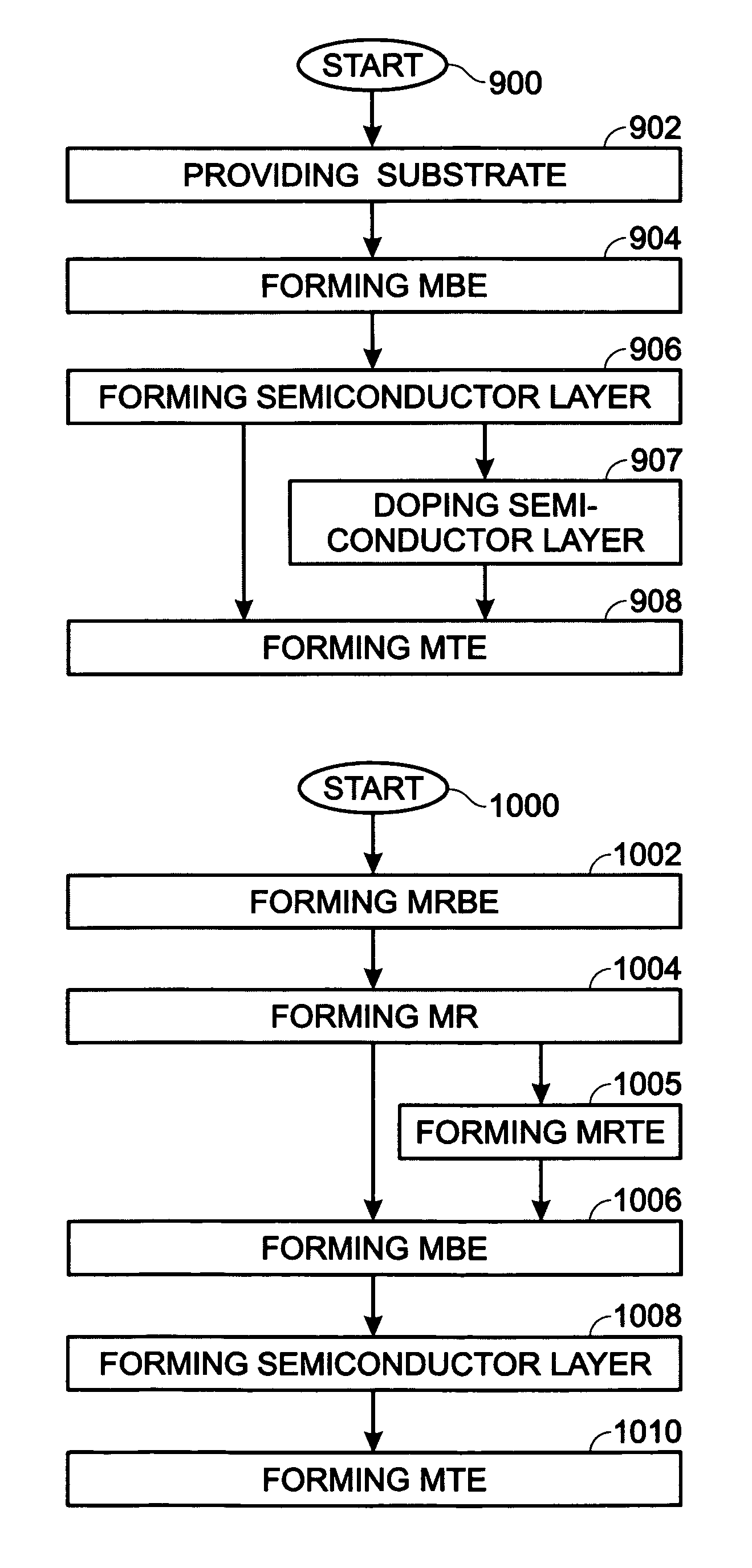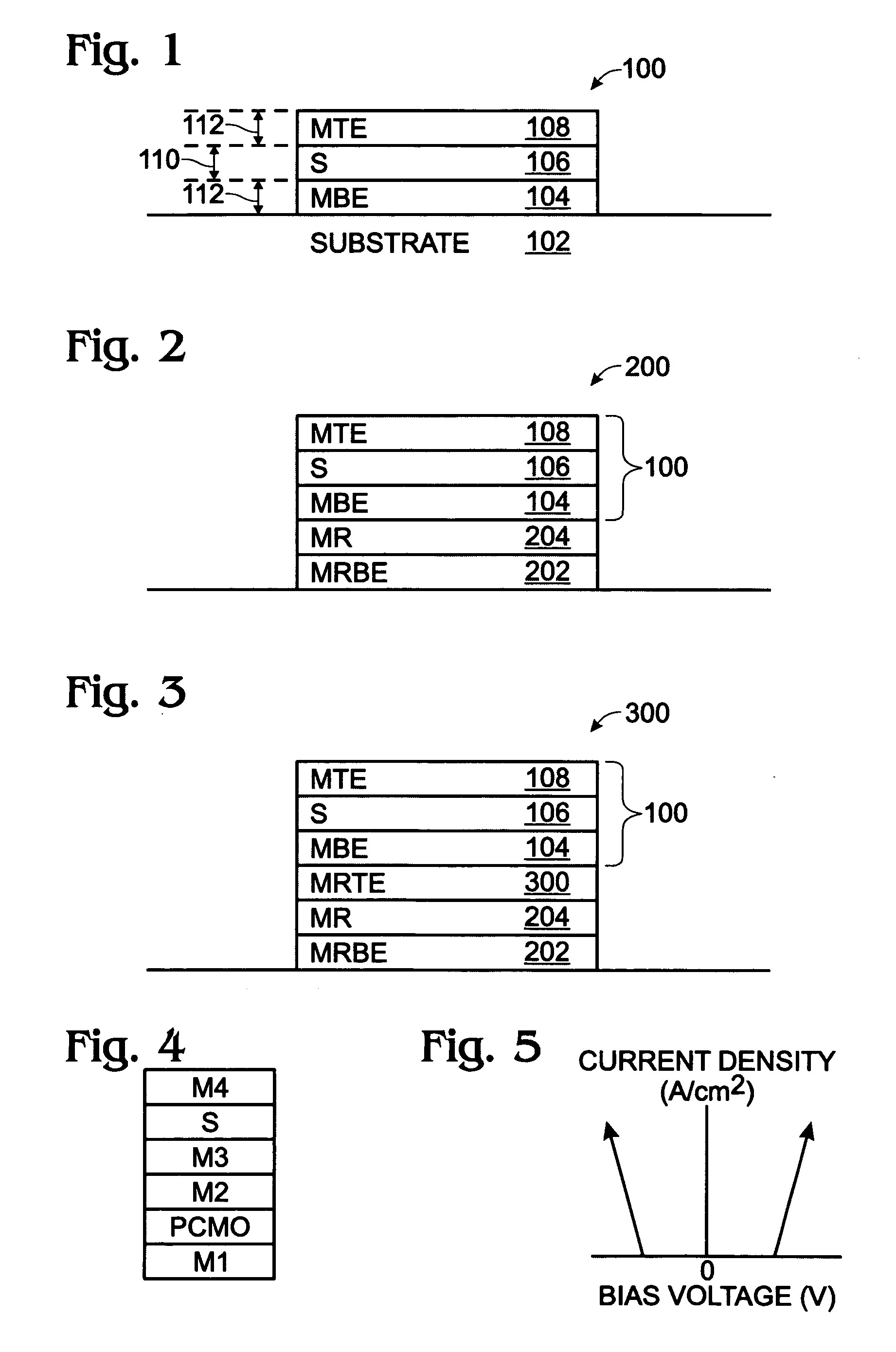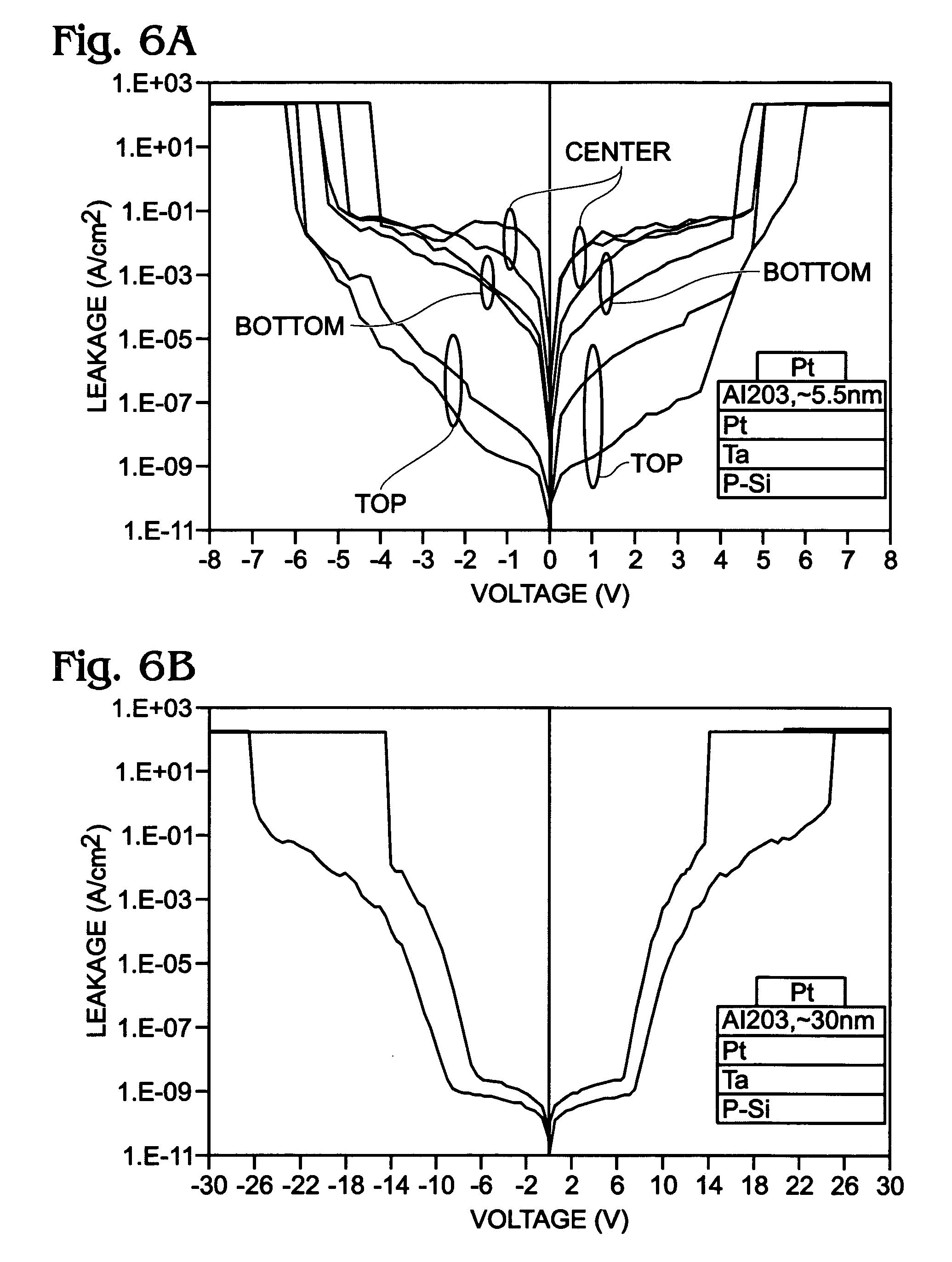Crosspoint resistor memory device with back-to-back Schottky diodes
a cross-point resistor and memory device technology, applied in the direction of semiconductor devices, electrical equipment, basic electric elements, etc., can solve the problems of many conventional cross-point resistor memory arrays suffering from read disturbance problems
- Summary
- Abstract
- Description
- Claims
- Application Information
AI Technical Summary
Benefits of technology
Problems solved by technology
Method used
Image
Examples
Embodiment Construction
[0028]FIG. 1 is a partial cross-sectional view of a metal / semiconductor / metal (MSM) back-to-back Schottky diode. The MSM diode 100 comprises a substrate 102 and a metal bottom electrode (MBE) 104 overlying the substrate 102. The substrate 102 is not limited to any particular material, and may be a material such as Si, Ge, SiO2, GeAs, glass, quartz, or plastic. The metal bottom electrode 104 has a first work function. A semiconductor layer (S) 106 overlies the metal bottom electrode 104, and has a second work function that is less than the first work function. A metal top electrode 108 overlies the semiconductor layer 106, and has a third work function, greater than the second work function.
[0029] Work function is a measue of the minimum energy, as expressed in electron volts (eV), needed to remove an electron from the Fermi level in a metal, to a far point. Typically, a metal's work function is approximately half the ionization energy of a free atom of the metal. Work function is a...
PUM
 Login to View More
Login to View More Abstract
Description
Claims
Application Information
 Login to View More
Login to View More - R&D
- Intellectual Property
- Life Sciences
- Materials
- Tech Scout
- Unparalleled Data Quality
- Higher Quality Content
- 60% Fewer Hallucinations
Browse by: Latest US Patents, China's latest patents, Technical Efficacy Thesaurus, Application Domain, Technology Topic, Popular Technical Reports.
© 2025 PatSnap. All rights reserved.Legal|Privacy policy|Modern Slavery Act Transparency Statement|Sitemap|About US| Contact US: help@patsnap.com



